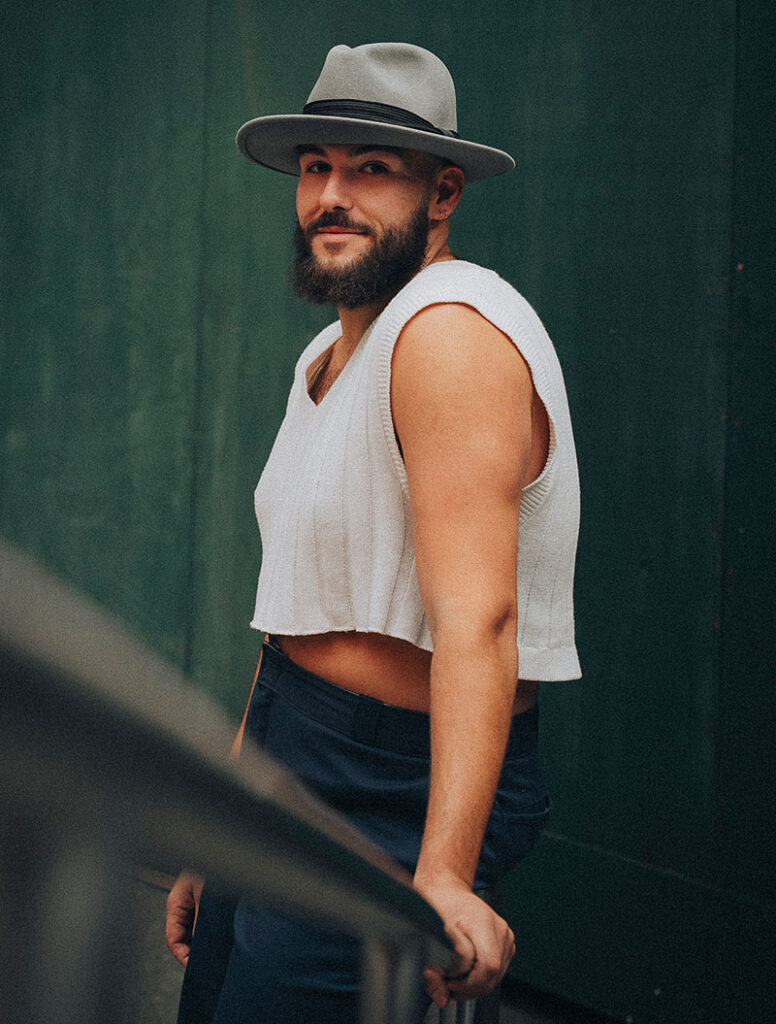Isaiah Silvia-Chandley
By Jen Banowetz
February 2024 View more Spotlight
In step with Billy Elliot’s choreographer

While it sounds like some kind of feel-good musical trope, choreographer Isaiah Silvia-Chandley really did grow up in New Hampshire playing hockey and football. But he also loved dance and theater. “In football, the agility of dance and applying that to the field really helped,” he recalls. Choreography, however, is what he’s become most passionate about. “I’ve always been drawn to creating movement, and to be able to aid in storytelling through movement is really exciting to me.”
He can pinpoint his big break to a single email he sent, shortly after graduating from Columbia College Chicago, introducing himself and his talents to Trent Stork, who later was set to direct Paramount Theatre’s production of Kinky Boots. Stork wound up tapping Silvia-Chandley to choreograph the show with Michael Samarie George. And then came work on Paramount’s School of Rock. And now Billy Elliot: The Musical, which runs February 7 through March 24 at the Aurora theater.
Of course, the show is not just a musical with dancing—it is a musical about dancing. Its titular hero is the lone boy in dance class, something Silvia-Chandley found quite relatable.
Q: Has the show made you reflect on your own dance background?
A: I look at Billy, and part of that was me. Thankfully, I had parents who were so accepting of whatever decision or whatever extracurricular I wanted to do; they fully supported me. At the time I was taking dance classes, I was a little nervous to tell people that I danced. I was the only boy at the dance studio. I remember one time in sixth grade, I got so nervous that people would find out that I danced because I used to kind of keep it kind of a secret, where only a few of my close friends would know. And now I think the world has shifted into more accepting and more open-mindedness.
Q: When did you know that you wanted to be a choreographer?
A: It’s just always been my dream. You know when kids are little, they are like, ‘I want to be a doctor,’ ‘I want to be a dentist,’ or ‘I want to be famous or a singer.’ And mine was always like, ‘I want to be on Broadway.’ It just never changed. When I saw Hairspray in 2003 on Broadway, I left that theater and I was like, I what to do that. I want to be Tracy Turnblad. [He laughs.] I remember it was the first time I had ever been moved by movement.
Q: What’s your process like for creating choreography?
A: Reading the script and listening to the music are the first steps. I like to go through a lot of different drafts to find the movement language for the show. How do I want the movement to look? How do I want the movement to feel? I go through many iterations of that.
I also think doing research is really important, especially for a show like this—it’s mid-’80s and it’s during the [U.K.] miners’ strike—doing enough research so you that you can understand who these people are and how would they move in a musical setting. The way a miner moves is going to be way different than the way Mrs. Wilkinson, the dance teacher, moves. So, trying to find their movement vocabulary and what that would look like, what it would feel like.
Q: What advice do you have for someone wants to break into theater?
A: Something I’ve done a lot of—this is from my dad: Don’t be afraid to let people know you want to do something. If I hadn’t sent that email [to Stork] I wouldn’t have the career that I have so far. You have to put yourself out there.
As a choreographer I’m trying to establish more relationships with directors, so I cold-send emails; I reach out to directors who I’ve either seen their work or I know of their work and I mention to them what excites me. Sometimes you don’t get a response, sometimes you get a response that’s like, ‘Thanks, we’ll keep you on file,’ and sometimes you’re meeting for coffee with them next week.
Photo: Chollette


